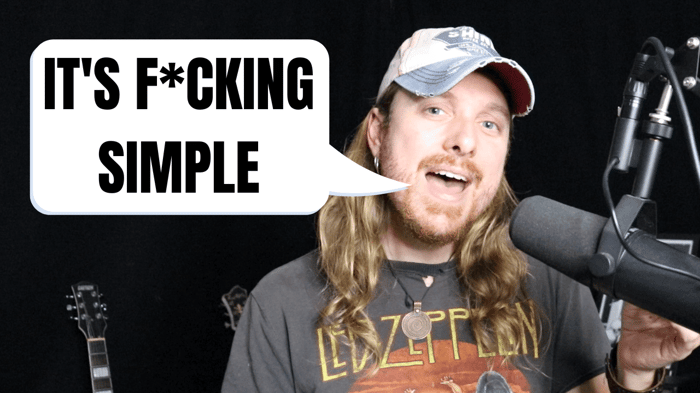So you're looking for tips to sing better instantly.
You don't want a science manual.
Or a 5 hour warmup.
... or bullshit!
You just want to know how to hit the notes you want to sing in the best way possible... in that FASTEST way possible, right?
You really CAN sing better instantly if you apply these simple tips to sing better;
#1 - Support OUT, not UP
9 times out of ten, when I get a singer who is struggling come to me for help in my studio, they're just not supporting their voice correctly. Now, with a name like "support" - it might make you think you have to 'lift' or even 'clench' your abs to support - just like a shelf holding up bricks, right?
The truth is, support is actually LATERAL - just like the feeling you get in the ribs and mid section when you blow up a balloon.
Instead of straining and struggling to hit high notes, support OUT from the ribs and create some resistance along with your airflow - you'll notice that you sing with more freedom and ease.
#2 - Get your vowel right!
AEIOU, right? Not exactly.
In singing, your 'vowel' is really a set of frequencies that are derived from vibration of the vocal folds.
... and the PITCH that you sing this vowel is also derived from vibration of the vocal folds.
So you can see where the conflict of interest is in your approach.
If you increase your pitch, your vowel needs to shift in colour to accomodate this change in frequency of vibration.
Vowel modification is actually VERY easy;
3 - It's all connected (literally)
So you've been trying to sing with a "chesty mix" or take your chest voice as high as possible, right? Because let's face it - head voice sucks.
Or DOES it?
There's a reason high rock and pop singing is called "mix" - it's literally a 'mix' of head and chest voice together, equal parts TA muscle "weight" and CT muscle "stretch", literally connected in every way... YES, even your vowels are blended.
So, you have to ask yourself the question - "if mixed voice is the key... then WHY am I avoiding head voice??" - and this is the age old question that great singers ask themselves at some point.
The key here is realising that "full voice" exists in both chest voice and head voice - in the form of MIXED voice, meaning that you're not flipping into falsetto and breaking apart, because it's a CONNECTED form of head voice that has the same full quality as your chest voice, but where you enjoy the extensive range afforded by head voice.
The first step to finding your mixed voice is simply to CONNECT your head and chest voice into one long register from top to bottom with no breaks - here's how to do it; How to connect Chest and Head Voice [VIDEO]

![Which singing exercise works best? [hint: NONE]](https://dropinblog.net/cdn-cgi/image/fit=scale-down,width=700/34244329/files/featured/ROCK_SINGING__1_.png)
![Learning how to sing? [Why you're finding it SO difficult]](https://dropinblog.net/cdn-cgi/image/fit=scale-down,width=700/34244329/files/featured/HEY_.png)